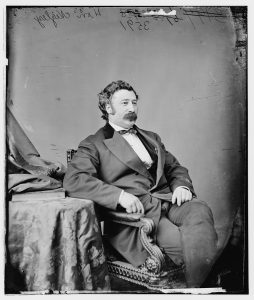For a better future, study the past.
Menu
For a better future, study the past.

2013. Bibliography, endnotes, b/w photos.126 pages, 100 pages of text. ISBN 9781609498993,
$19.99.
The Civil War produced stories too numerous to ever be covered, no matter the number of
words. These stories range from the big picture issues of slavery and battles, all the way through local impacts on communities and individuals. Volumes in the Arcadia Publishing Hidden History series often focus on more localized stories. These may be more well-known events all the way through smaller locally recognized happenings. These stories are always of interest and help expand our knowledge of how the war influenced our country.
Author James B. Jones, Jr. served as a public historian on the staff of the Tennessee Historical
Commission and served as editor of their newsletter, The Courier.
Jones covers six major topics in his book; most of which I would propose are unknown to
readers. The first chapter discusses the safety and vigilance committees of west and middle
Tennessee in the early years of the war. In reality, these were really misnomers for those not
loyal to the Confederacy or those having the slightest hint of Union sympathies. Violence and
intimidation were common by these groups. Voter intimidation was a common tactic and even
those who were not drummed out of town often did not vote knowing their ballot would be
discovered.
The following two chapters deal with public health issues. The topics of prostitution and
venereal disease were a major concern during the war years. Efforts to rid cities such as
Nashville of prostitutes failed. Rather than continue to fight this issue officials made efforts to
control the trade. It was mandated that prostitutes register and be licensed after being tested for
disease. These registration fees often helped cover the health care expenses of other workers. The
influx of military troops helped bring other public health issues to the fore. The city of
Murfreesboro suffered from smallpox in November 1863. Other cities, particularly large ones
such as Nashville suffered from poor sewage, inadequate waste removal, and vermin infestation.

The next chapters are more military in focus. Jones tells the story of Colonel John M. Hughs, the guerilla leader of the twenty-fifth Tennessee Infantry. This is followed by a chapter dealing the several days long Negley’s Raid of 1862. This Union attack helped drive Confederate forces from Chattanooga. In the minds of many Union brass, the actions of the raiders helped turn many local Union supports to the Confederates.
In the final full chapter, Jones discusses the occupation of Memphis by Union troops under the command of William T. Sherman. Sherman faced multiple problems during this early stage of the war. His first method of keeping control was to control the press. Despite being able to control the local narrative there were logistical problems not so easy to solve. These included a swelling contraband population. He then faced feeding, housing, and clothing these new arrivals. Multiple currencies were in circulation and with it came problems in issues of trade. Illegal trade with enemy troops, especially in cotton, became so onerous that Sherman expelled the traders and speculators. Jones asserts that while Sherman was considered to have wielded a heavy hand he really had no choice.
The book closes with a short appendix of General Orders.
The book is a quick read coming in at 100 pages of text including many interesting b/w photos. It
can certainly be completed during an afternoon on the back porch in your comfortable chair. The
notes and bibliography are welcome additions for those interested in learning more on selected
topics.
While some may quibble with the topics Jones has chosen to include, I do not think that is really
the point of this series. This series is meant to bring the unfamiliar to readers. Perhaps a second
volume can be produced telling additional stories. Because different authors write the books in
this series, there is little continuity book to book other than the use of short vignettes.
For those seeking a short Civil War read that is not heavy on detail this may be for you.
You may read other reviews of Arcadia Publishing titles by clicking here.
An excellent guide to Civil War sites in Tennessee can be found here.
For an excellent archive of Tennessee Civil War materials visit the Tennessee State Library and Archives, located in Nashville.
This post may contain affiliate links. If you click these links and make a purchase, I may receive a small
commission. This commission does not affect any price that you pay. All views and opinions provided
are my own and are never influenced by affiliate programs or sponsors providing products.